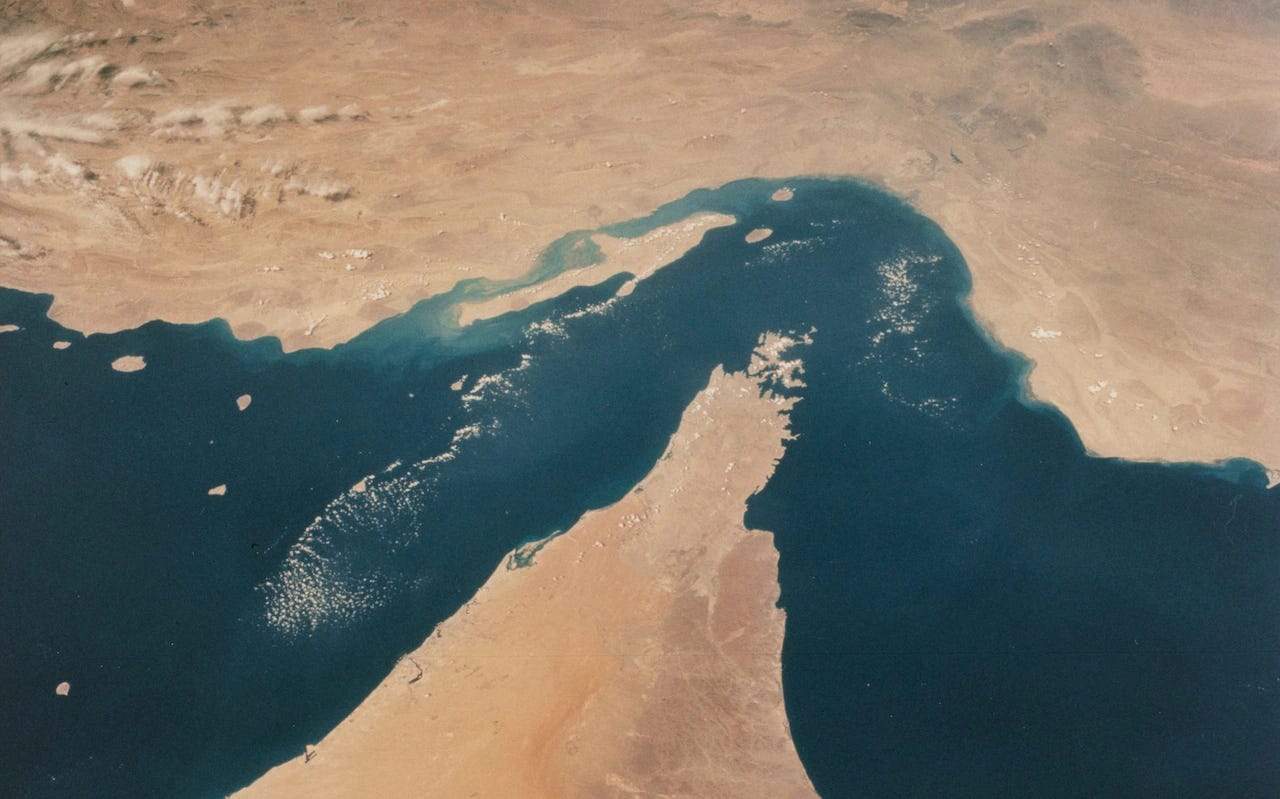EXTRA: Iran’s Strait of Hormuz Threat Is Much Ado About Nothing
Could the price of oil spike? Yes. Could the U.S. 5th Fleet sink the entire Iranian Navy in a day? Also yes.
Don’t miss these important analyses from this weekend, both FREE:
This analysis is free, but with Premium Membership you get MORE. Join today.
by Craig Bergman and Rod D. Martin
June 23, 2025
This afternoon, Iran launched its much-vaunted retalitation: a missile strike against America’s largest base in-region. Qatari air defenses shot down all of Iran’s missiles, which was easier since Iran gave the Americans a heads-up lest anyone actually be killed.
Yes, walk gingerly Mr. Ayatollah. We know exactly where you are.
And yet the hand-wringing is in full swing. Iran’s parliament, in a fit of theatrical bravado, approved a measure on June 22, 2025, to close the Strait of Hormuz, the narrow waterway carrying 18-19 million barrels of oil daily — roughly 20% of global supply.
Social media is ablaze with doomscrolling, and the usual suspects — leftists, libertarians, and Never Trumpers — are clutching their pearls, proclaiming this as proof of President Trump’s reckless foreign policy spiraling into World War III.
Relax, folks. This is neither a war nor even a crisis. It’s a predictable Iranian tantrum, and the U.S., as the world’s largest oil exporter, doesn’t need to play savior but chooses to for global stability.
The real loser should the Strait close? China. And they’ll quietly thank us for our handling of it.
Let’s start with the math. The Strait of Hormuz is a vital artery, no question. In 2024, 69% of its crude flows went to China, India, Japan, and South Korea. A closure could spike oil prices above $100 a barrel, maybe even $150, as Goldman Sachs analysts have warned. That’s a hit to economies, sure. But history tells us this is a storm in a teacup.
During the 1980s Tanker War, Iran and Iraq attacked shipping, yet less than 2% of vessels were disrupted, and global oil prices didn’t skyrocket — they fell. Today, Saudi Arabia’s East-West pipeline can handle 5 million barrels daily, expandable to 7 million, and the UAE’s Fujairah pipeline adds 1.8 million. That’s 2.6 million barrels a day to bypass the strait, softening the blow. Iraq and Kuwait might sweat, but the world won’t grind to a halt.
Iran’s capabilities are real but overblown, and diminishing fast. The Islamic Revolutionary Guard Corps has mines, anti-ship missiles, and speedboats for swarm attacks in the strait’s shallow waters. Scary on paper. But the U.S. Fifth Fleet, stationed in Bahrain, commands a regional force of 40,000 to 50,000 troops across 19 bases, bolstered by Marines and F-35s in 2024.

Despite what the Enemedia wants you to believe, these are not targets or hostages. These are daggers aimed at Iran’s heart.
In the 1980s, Operation Earnest Will saw U.S. Navy escorts neutralize Iran’s antics with ease. Today’s tech makes that job even quicker. If Iran tries to close the strait, expect it to be reopened in days, not weeks. This isn’t World War III: it’s a speed bump.
Now, the politics, international and domestic.
Keep reading with a 7-day free trial
Subscribe to The Rod Martin Report to keep reading this post and get 7 days of free access to the full post archives.







